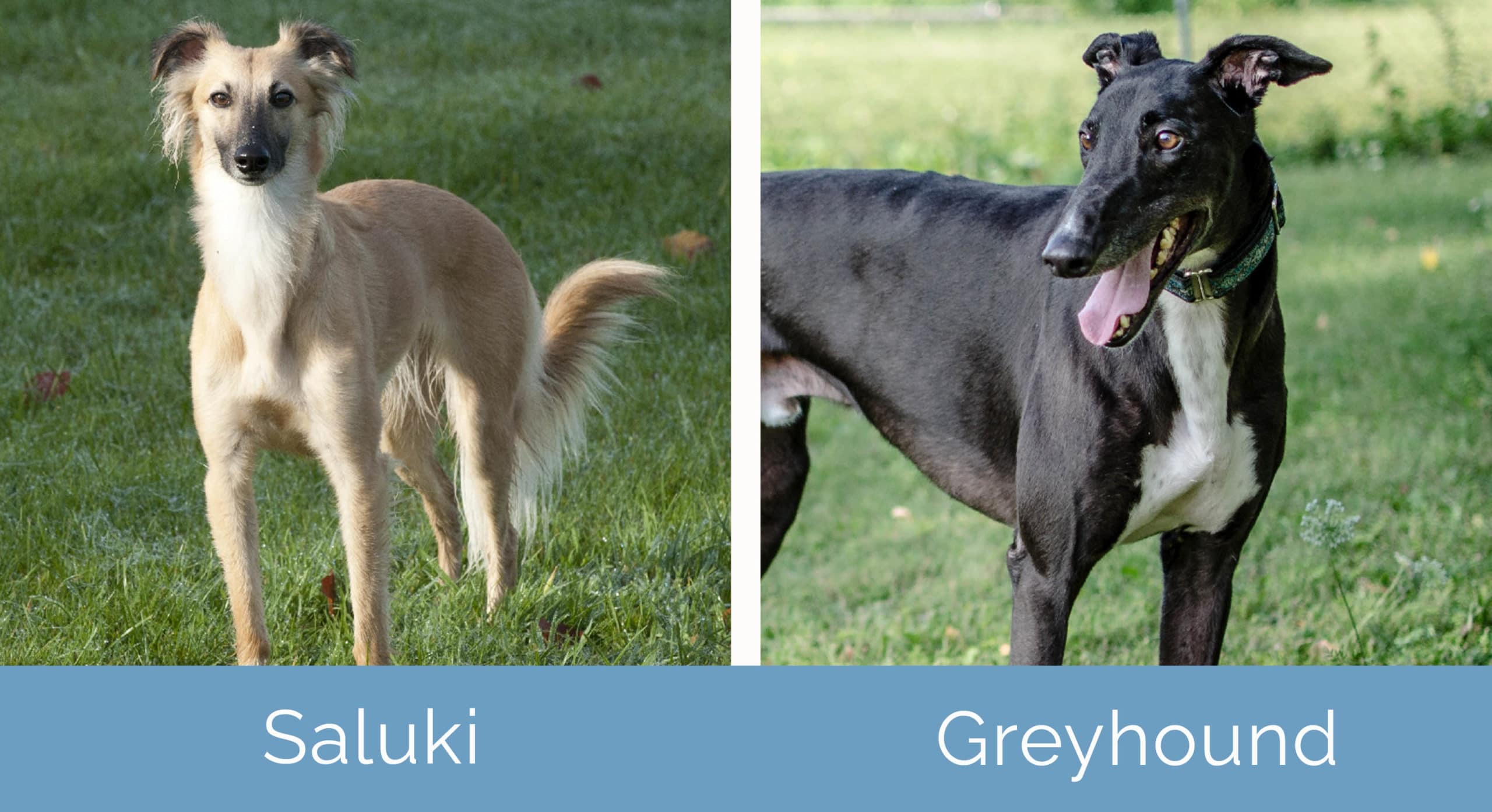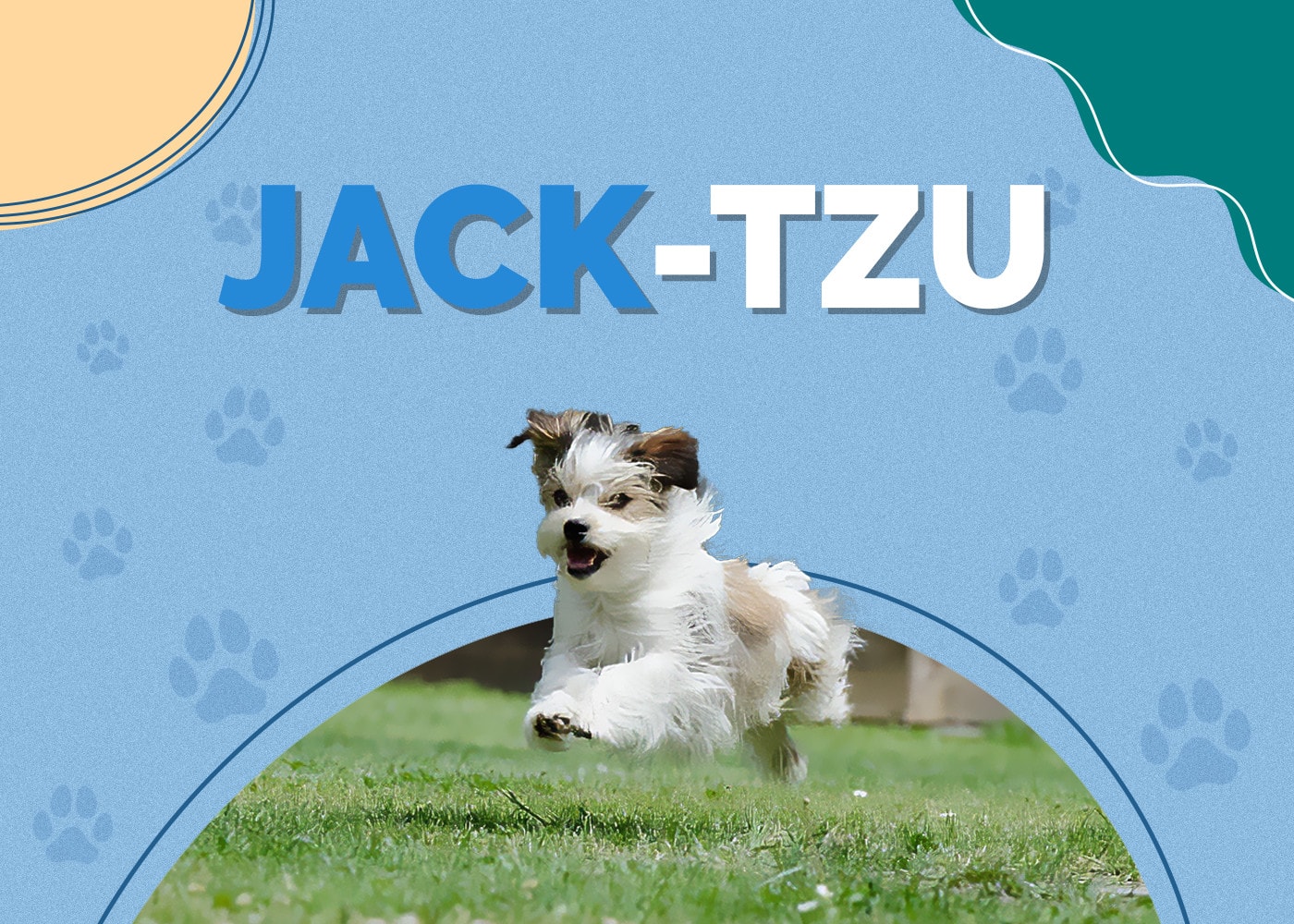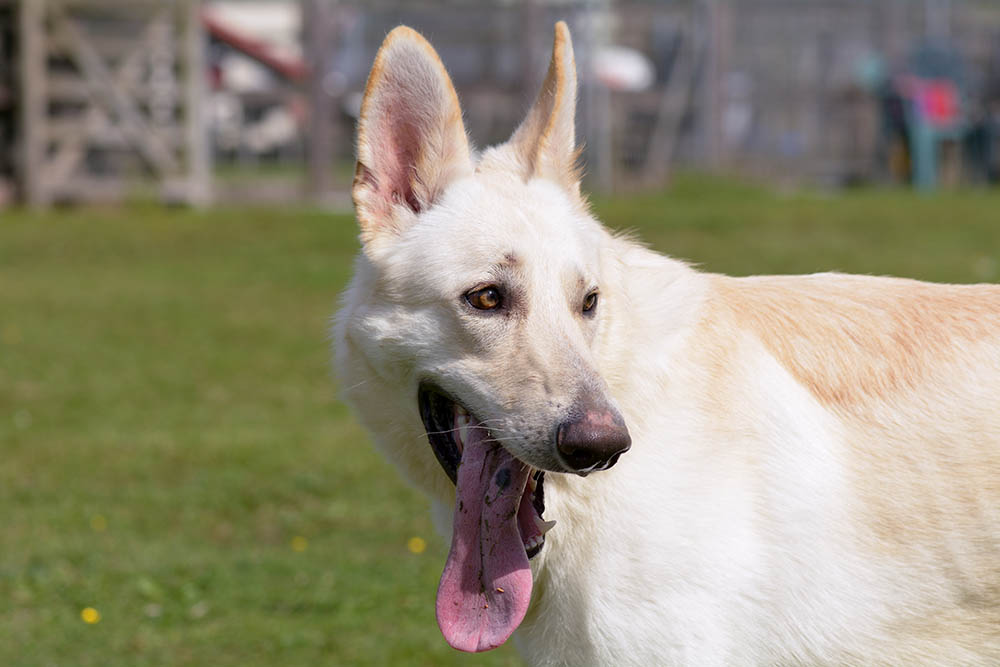Saluki vs Greyhound: What Are The Differences?

Updated on

The Saluki and the Greyhound may look similar. They are both sleek, skinny, and quite tall. They are also both very fast and have a strong prey drive. However, there are some major differences between the breeds.
While the Saluki will not usually do well in an apartment, the Greyhound can adapt to life in a small space. This is because, while it is an incredibly fast animal, it spends the vast majority of its time laying on the sofa and it doesn’t matter what size room that sofa is in. It is also known for being a silent dog.
Let’s take a closer look at the similarities and differences between these two beautiful sighthounds.
Visual Differences
A Quick Overview
- Average Height (adult): 23–28 inches
- Average Weight (adult): 35–65 pounds
- Lifespan: 12–14 years
- Exercise: 2+ hours/day
- Grooming needs: Low
- Family-friendly: Yes
- Dog-friendly: Usually
- Trainability: Moderate
- Average Height (adult): 26–30 inches
- Average Weight (adult): 60–90 pounds
- Lifespan: 10-14 years
- Exercise: 1 hour/day
- Grooming needs: Low
- Family-friendly: Yes
- Dog-friendly: Yes
- Trainability: Varies
Saluki Overview
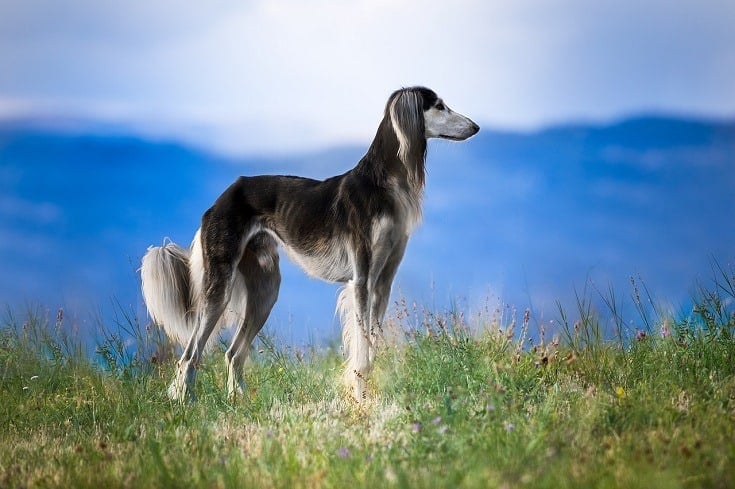
The Saluki is an Arabic dog that was once considered a gift from Allah. It is fast and graceful, affectionate and loving, and will usually get along with all family members, although can be quite aloof around strangers. As a sighthound, the Saluki will chase anything that moves and warrants attention. This can include cats, small animals like squirrels, cars, and even inanimate objects like leaves blowing in the wind. This innate desire to chase is the primary reason why Salukis should be exercised on their leash and should not be trusted to return when off the leash.
This is a bony breed, which means that they will require soft cushioning for their bed and to sit on. They will especially enjoy sitting on the sofa or lying on your bed, so expect to find them in these locations at most points in the day.
Personality
The Saluki is considered standoffish. They will give strangers a lot of space, and will carefully choose the people that they want to become friends with. Even if he does choose you as a friend, his friendship is more likely to take the form of quiet companionship.
The breed is considered very sensitive. This means that they will pick up on the attitude at home. If you have teenage children who argue regularly, your dog will pick up on this and may react negatively.
Without proper socialization, this breed can be very shy and reserved, and if socialization is not provided at a young age, it becomes increasingly difficult to introduce them to other dogs and people.
Training
As an intelligent breed, the Saluki can be trained, but they are also very independent. If they see or hear something that grabs their attention more than your training effort, be prepared for the fact that they will be quite happy to ignore you and walk away. Use positive reinforcement, introduce treats to your training, and try to keep your training regimen fun and entertaining if you want to enjoy the best results. If you’re looking for a breed that does precisely what you say, every time, the Saluki is not an appropriate breed.
Ensure that you provide socialization at a young age. The Saluki can be reserved around strangers, even if they are taught how to behave properly. Without early socialization, they are even less likely to want to be involved with other people.
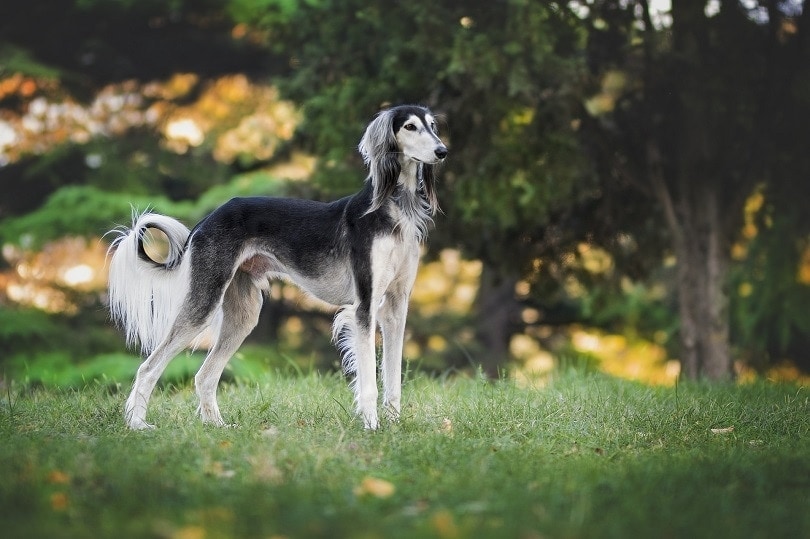
Health and Care
The Saluki is a fairly hardy breed. However, they are bony and may suffer injuries as a result of their spindly legs, and are prone to some genetic conditions including hemangiosarcoma, cardiomyopathy, and hypothyroidism.
The short hair of the Saluki means that, although the breed does shed, you may not notice it as easily as you would with a long-haired breed like a Retriever. However, weekly brushing will help prevent their hair from knotting and can minimize the hair that they leave behind on furniture and clothing.
Suitable For:
Families that are looking for an active pet to take on runs, long walks, agility, and other classes. They will get along with all family members but is better with older children rather than young ones.
Greyhound Overview
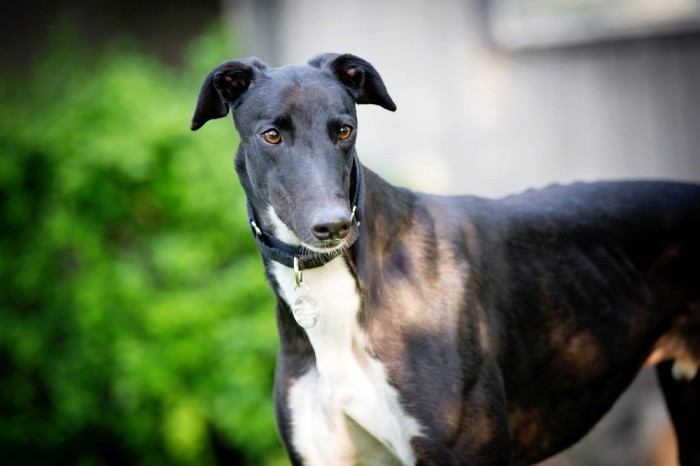
The Greyhound is the fastest of all dog breeds and can achieve speeds of 40 miles per hour or more. Despite this, they are often described as being the world’s fastest couch potato because they only have two gears—flat-out running and flat-out asleep.
The greyhound is a sighthound which means, like the Saluki, he is prone to chasing small objects and small animals.
Unlike the Sanuki, the Greyhound will adapt to life in an apartment as long as you can provide them with enough cushions and plenty of room on the bed. Although the Greyhound will enjoy some energetic moments, charging around at full speed, he is usually a sweet and loving dog that gets along with people and all dogs.
Personality
The Greyhound does make a good family pet. They will get along with all humans, and usually get along with other dogs because they are used to being kept around them, and will want to please their owner. They will get along with children but will prefer older children because they are more respectful and are less likely to injure their bony legs.
The Greyhound is usually friendly towards strangers. Some may be a little wary around people they’ve never met, but it won’t take them long to warm up to new people, especially if those new people come bearing treats and gifts.
Training
Greyhounds are intelligent but they’re also lazy and stubborn. If they are in the right frame of mind, they can be taught virtually any command and new behavior. However, if they want to do something else other than training, they will. Ensure training is positive, offer rewards, and keep training sessions short but fun to get the best results.

Health and Care
Like the Saluki, the Greyhound is known for being a generally healthy dog, but they do suffer from the same long and slightly fragile legs. They are also prone to health conditions including osteosarcoma, hypothyroidism, and bloat.
Suitable For:
The Greyhound is suitable for individuals and families. They do require some exercise but, contrary to what many people believe, they don’t need hours and hours of exercise. They tend to do better with intense but short exercise periods.
Which Breed Is Right for You?
The Saluki and the Greyhound are very similar breeds. They are both fast and enjoy exercise. They can both be stubborn when it comes to training, and both will get along with other dogs and most family members.
However, the Greyhound tends to get on better with strangers, although they may be a little shy, and can adapt to life in an apartment better than the Saluki. Deciding on the breed that is right for you will ultimately come down to your preferences. One thing is for sure, you can’t go wrong with either one of these lovely animals.
Featured Image By: (L) SubertT, Shutterstock | (R) Tracy Kerestesh, Shutterstock

